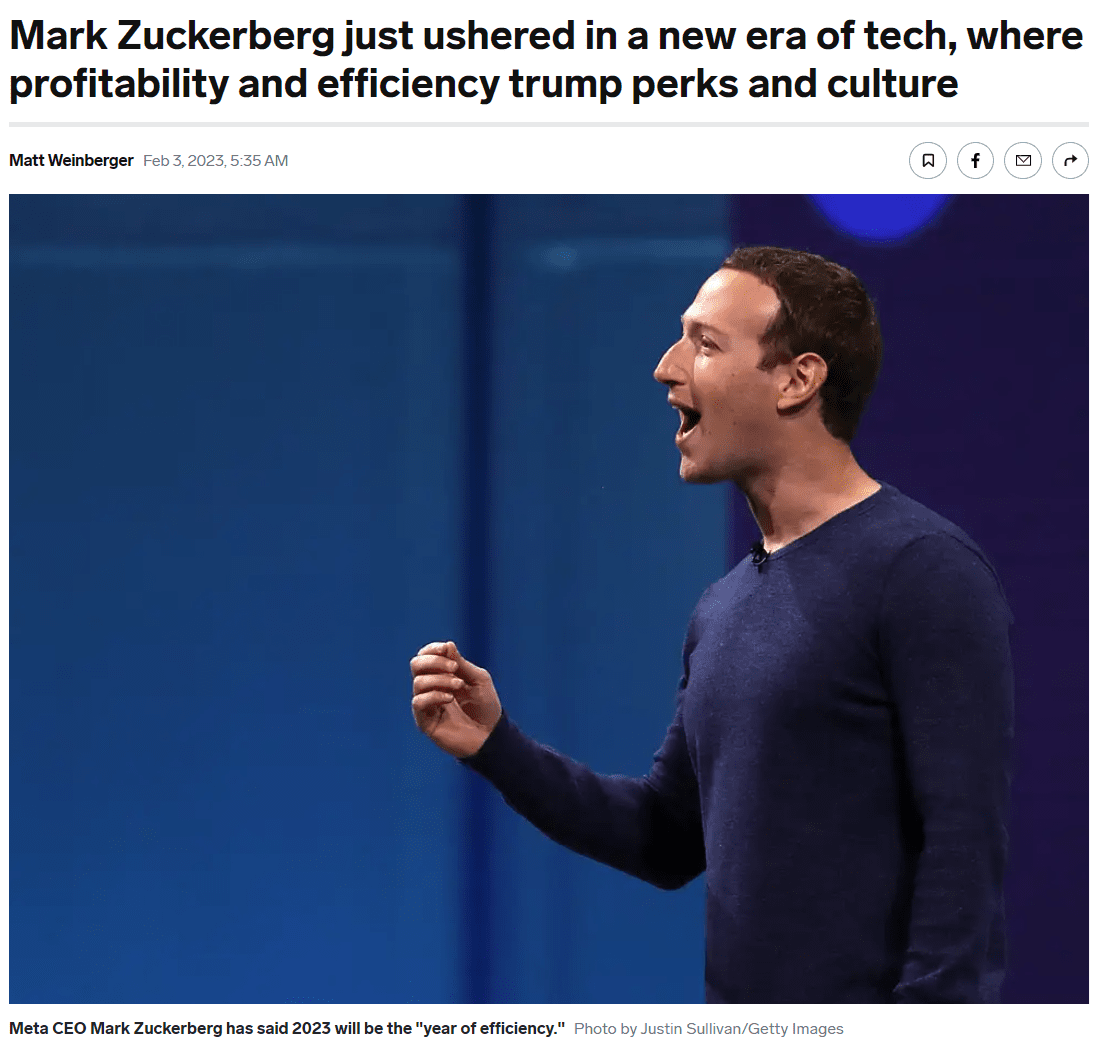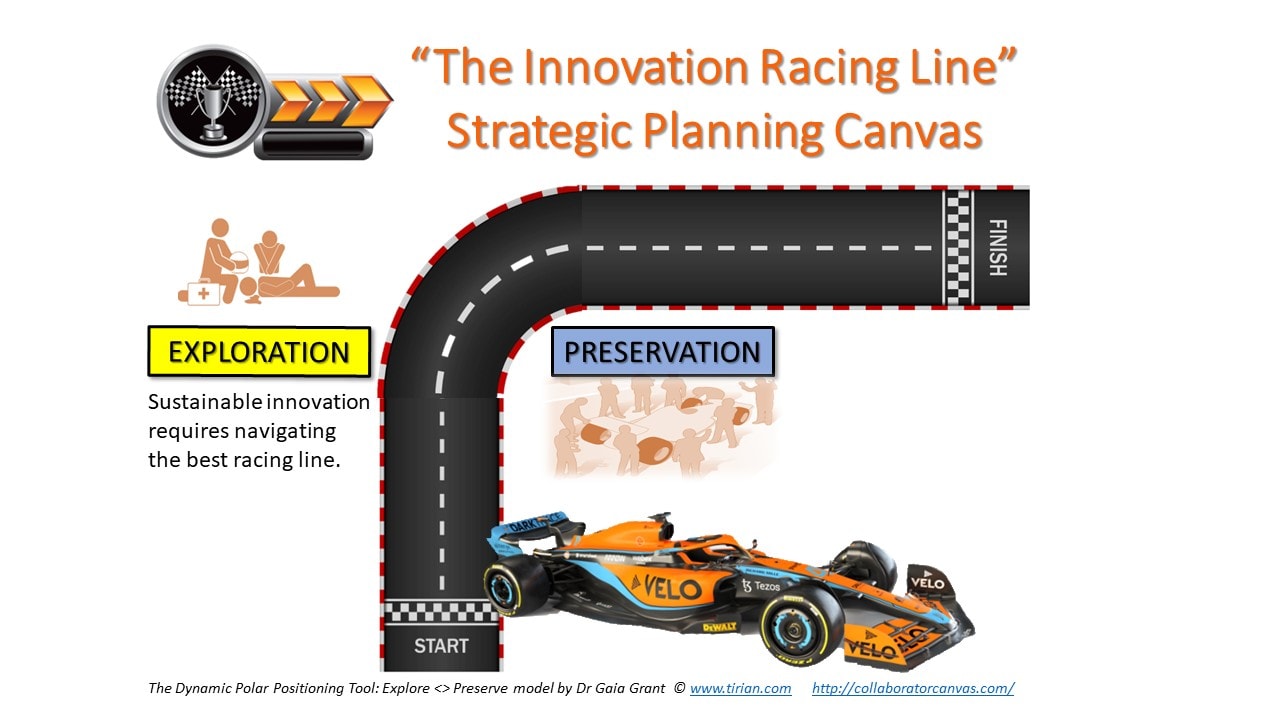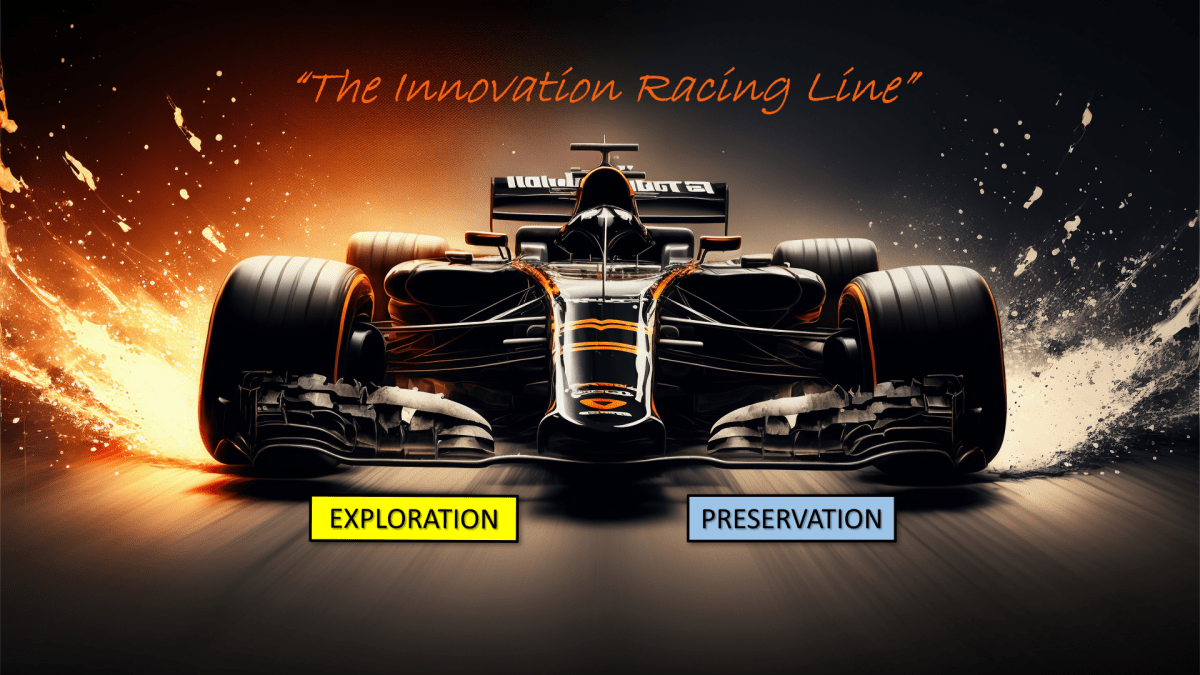It’s difficult to see what Zuckerberg’s strategy has been over a few-year period. In 2022 he blew over $13B on Meta’s Reality Labs division when he worked on building a metaverse that didn’t attract the expected users and ended up largely empty. He focused on VR products and experiences that were rejected by many. Now the apparently indiscriminate spending seems to have come to an end.
By the end of the 2022 over 11,000 employees had been laid off. 2023 was then heralded as “the year of efficiency” – with measures introduced to flatten the organizational structure (or remove middle management) and convey a clear message that the spending spree was over. By 2024 large tech companies were having some of the most profitable quarters in history, despite the fact that their revenues were decelerating. Some say they were rescued by AI.
With no clear strategic direction, Zuckerberg appeared to be a racing driver in a rush to get to the future, while in the process skidding all over the road.
The dangers of rapid shifts to the extremes
The challenge for Zuckerberg was cutting back on spending without sacrificing future innovation. A critic such as Prof Scott Galloway believes that by 2024 AI saved Zuckerberg from his fevered dreams of the metaverse by being able to cut back and move forward. (1)
However, not all of us have the resources to burn Mark and Meta, and hence, following Mark on his explorative journey is not a model to make case studies from. It’s better to look a the research, not the outliers. Sustainable innovation is not just about taking risks and looking for breakthrough new innovations in the quest for the ultimate next best thing. It involves pursuing both exploration, or this sort of risk taking AND preservation, or identifying how to provide a firm and secure foundation for launching into the future.
Rather than engaging in rapid shifts to extremes, lurching from one side of the road to the other, sustainable innovation requires the strategic intent to pursue both goals simultaneously. Too much of a focus on rampant exploration can lead to chaos and crisis, while too much of a focus on conservative preservation can stifle the potential for growth.
The ideal balance lies somewhere between the extremes.

What the Renaissance revealed about sustainable innovation
In her research, Gaia has looked at over 60 years of literature on innovation. She came across one particular study that identified what has been labeled as ‘creativogenic’ cultures, or cultures that produce an unusual number of geniuses.
This study found that the Renaissance period was one such point in time when all the right economic, social and political forces seemed to align to support an incredible period of creative growth.
The factors that led to this growth included clear exploration dimensions, such as: an emphasis on freedom (eg democratic governments), an openness to new ideas (eg an ability to easily cross-country borders and share ideas), collaboration (eg a commitment to mutually beneficial outcomes), and flexibility (eg the opportunity to experiment).
In her own research interviewing over 70 innovation leaders, and surveying more than 3000 employees worldwide, Gaia identified the paradoxical pairs for these factors – or the factors that would work to hold the extremes in tension – the nested dimensions for both exploration (E) and preservation (P). She found that as well as needing freedom (E), we also need some control (P). As well as openness (E), we also need focus (P). Collaboration (E) requires independent thinking (P), while flexibility (E) needs some stability (P).
Navigating the ‘innovation race’ sustainably will require identifying how to incorporate both perspectives into everything you and your team do (eg into your conversations, your meeting plans etc), as well as into the organisation’s systems and structures – which is known as ‘contextual ambiguity’.
Getting to the finish line
Preparation for sustainable innovation requires strategic planning and implementation. This means getting from a start point to the finish line and taking the curves in the most efficient and effective way possible – not burning out or crashing along the way or risking taking too much time out in the pits and getting left behind.
Taking the “ideal racing line” requires an ability to map and navigate a path that enables maximum speed while also anticipating and mitigating risks. A good leader plans a strategic route and knows how to best use the racing lines to get through to the end. Poor leaders will race ahead down the road with their own biases and no clear plan of where to go next.
Let’s focus on this sustainable approach for the long-term survival of our organisations, our people, and our planet.

WHAT DOES ‘TAKING THE RACING LINE’ MEAN?: In order to avoid spinning out and crashing, racers have to slow down to strategically craft the most efficient turns while retaining the greatest amount of speed, giving them a leg up against the competition. The most efficient path through any corner (or set of corners) is generally referred to as the “ideal racing line.
by Andrew Grant & Gaia Grant (PhD)
————————————–
Learn more about The Innovation Racing Line Strategic Planning Canvas http://collaboratorcanvas.com/
This canvas uses the uniquely developed Dynamic Polar Positioning tool and the Innovative Change Leader (iCLi) assessment to ensure leaders and teams can build the best strategy through planning the most effective routes. Teams learn how to map out a sustainable path, breaking the strategy down into distinct sections (including anticipating the challenging curves), and identifying the best ‘racing line’ to navigate the chosen path successfully.



